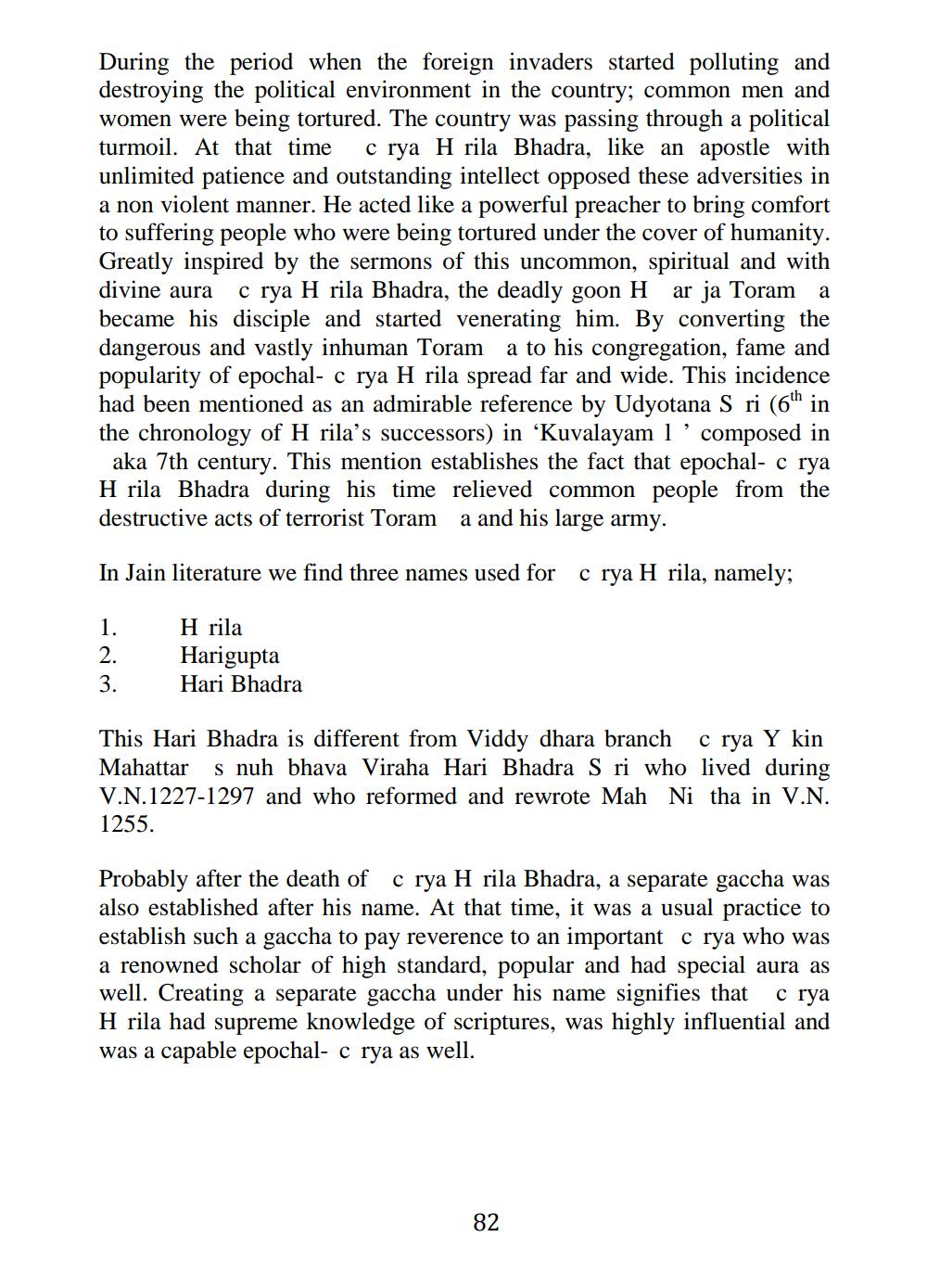________________
During the period when the foreign invaders started polluting and destroying the political environment in the country; common men and women were being tortured. The country was passing through a political turmoil. At that time crya H rila Bhadra, like an apostle with unlimited patience and outstanding intellect opposed these adversities in a non violent manner. He acted like a powerful preacher to bring comfort to suffering people who were being tortured under the cover of humanity. Greatly inspired by the sermons of this uncommon, spiritual and with divine aura c rya H rila Bhadra, the deadly goon H ar ja Toram a became his disciple and started venerating him. By converting the dangerous and vastly inhuman Toram a to his congregation, fame and popularity of epochal- c rya H rila spread far and wide. This incidence had been mentioned as an admirable reference by Udyotana S ri (6th in the chronology of H rila's successors) in Kuvalayam 1'composed in
aka 7th century. This mention establishes the fact that epochal- c rya H rila Bhadra during his time relieved common people from the destructive acts of terrorist Toram a and his large army.
In Jain literature we find three names used for crya H rila, namely:
Licini
H rila Harigupta Hari Bhadra
This Hari Bhadra is different from Viddy dhara branch c rya Y kin Mahattar s nuh bhava Viraha Hari Bhadra Sri who lived during V.N.1227-1297 and who reformed and rewrote Mah Ni tha in V.N. 1255.
Probably after the death of crya H rila Bhadra, a separate gaccha was also established after his name. At that time, it was a usual practice to establish such a gaccha to pay reverence to an important crya who was a renowned scholar of high standard, popular and had special aura as well. Creating a separate gaccha under his name signifies that c rya H rila had supreme knowledge of scriptures, was highly influential and was a capable epochal- c rya as well.
82




